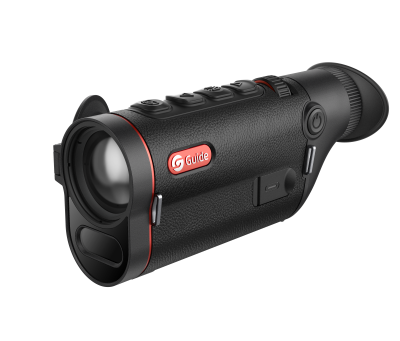
# Thermal Monoculars: Essential Gear for Night Vision and Surveillance
## Introduction to Thermal Monoculars
Thermal monoculars have revolutionized the way we see in the dark. These compact, handheld devices use infrared technology to detect heat signatures, making them invaluable tools for night vision and surveillance operations. Unlike traditional night vision goggles that rely on ambient light, thermal monoculars can operate in complete darkness, through smoke, fog, and even light foliage.
## How Thermal Monoculars Work
At their core, thermal monoculars detect infrared radiation emitted by all objects with a temperature above absolute zero. The device converts this radiation into an electronic signal, which is then processed to create a thermal image. Warmer objects appear brighter on the display, while cooler objects appear darker. This technology allows users to:
- Detect living creatures in total darkness
- See through obscurants like smoke or fog
- Identify heat sources from considerable distances
- Monitor temperature variations in equipment
## Key Features to Consider When Choosing a Thermal Monocular
Resolution and Detection Range
Higher resolution sensors provide clearer images and better target identification. Detection range varies by model, with professional-grade units capable of spotting human-sized targets at distances exceeding 1,000 yards.
Refresh Rate
A higher refresh rate (typically 30Hz or higher) ensures smooth video and reduces motion blur, crucial for tracking moving targets.
Battery Life
Look for models with extended battery life (8+ hours) for prolonged surveillance operations. Some units feature rechargeable batteries or the ability to use common battery types.
Durability and Weather Resistance
Military-grade thermal monoculars often feature rugged construction and are waterproof, making them suitable for harsh environments.
## Applications of Thermal Monoculars
Military and Law Enforcement
Thermal monoculars provide tactical advantages in night operations, search and rescue missions, and perimeter security. They allow officers to detect suspects hiding in darkness or concealed positions.
Hunting and Wildlife Observation
Hunters use thermal monoculars to track game at night, while researchers employ them to study nocturnal animal behavior without disturbing their subjects.
Home and Property Security
Property owners can use thermal imaging to monitor their premises after dark, detecting intruders that might evade traditional security cameras.
Industrial Inspections
Thermal monoculars help identify overheating equipment, electrical faults, and insulation problems in industrial settings.
## Maintenance and Care Tips
To ensure optimal performance and longevity of your thermal monocular:
- Store in a dry, temperature-controlled environment
- Clean lenses with appropriate microfiber cloths
- Avoid exposing the device to extreme temperatures when not in use
- Follow manufacturer guidelines for battery care
- Regularly check for firmware updates
## Future of Thermal Imaging Technology
As thermal technology continues to advance, we can expect to see:
- Higher resolution sensors in compact form factors
- Improved battery efficiency and alternative power sources
- Enhanced image processing algorithms for better clarity
- Integration with augmented reality systems
- More affordable options for civilian use
Thermal monoculars have become essential tools across multiple industries, offering capabilities that were once limited to military applications. Whether for professional use or personal security, investing in a quality thermal monocular can provide a
Keyword: thermal monoculars
Comments are closed